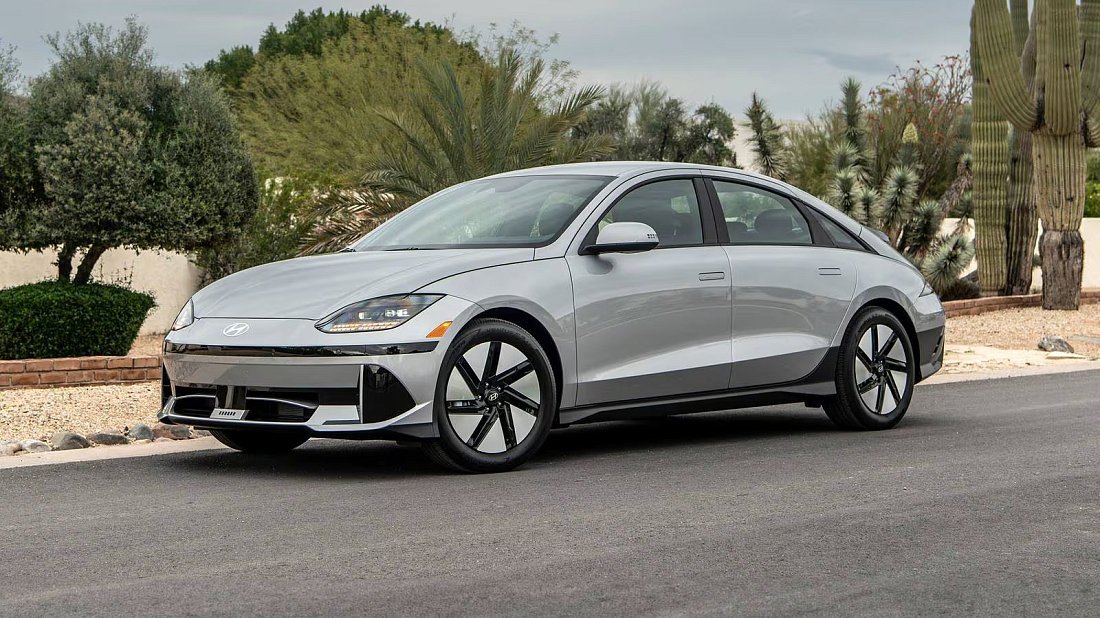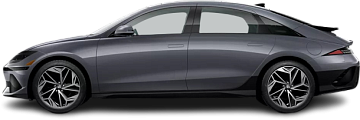EURO 1-phase 10A
- Socket specs
Socket specs
- 230 V, 10 A, 1-phase
- Socket output
Socket output
- 2.3 kW
- Charging 20-80%
Charging 20-80%
- 15 h 39 min (~16 km/h)


The Hyundai Ioniq 6 Standard Range 2WD is an all-electric rear-wheel drive sedan. It came out in 2023. Brand new, the car starts around €43,900.
The Hyundai Ioniq 6 Standard Range 2WD has a 58 kWh battery pack, allowing it to travel up to 365 km on a single charge. The car has an average efficiency of 14.8 kWh per 100 km (or 148 Wh/km) — ranked №316 out of 586 electric vehicles.
The Hyundai Ioniq 6 Standard Range 2WD can accelerate from 0 to 100 km/h in 8.8 seconds (ranked №409 out of 586 electric vehicles) and reach a top speed of 185 km/h.
The car’s powertrain delivers up to 111 kW (149 hp) of power and 350 Nm of torque.
Hyundai Ioniq 6 Standard Range 2WD achieves a real-world range of 329–402 km, placing it at №316 among 586 electric vehicles. However, this range is subject to several influences:
It's important to acknowledge that these are estimations, and your actual driving range may differ. Consider these factors when planning your trip and be ready for potential charging stops.
Utilize the interactive EV Navigation map for trip planning assistance.
In Europe Hyundai Ioniq 6 Standard Range 2WD has a CCS Type 2 charge port.
Estimate charging time, rate and cost using our Charging calculator.
Here are the dimensions and weight for the Hyundai Ioniq 6 Standard Range 2WD:
Behind the rear seats of the Hyundai Ioniq 6 Standard Range 2WD, you'll find 401 litres of storage space (ranked №376 out of 586 electric vehicles).
Folding down the rear seats expands the total cargo capacity to N/A litres (ranked №N/A out of 586 electric vehicles).
Frunk capacity: The front trunk is called a "frunk", and it offers an additional 45 litres for storing small items.







